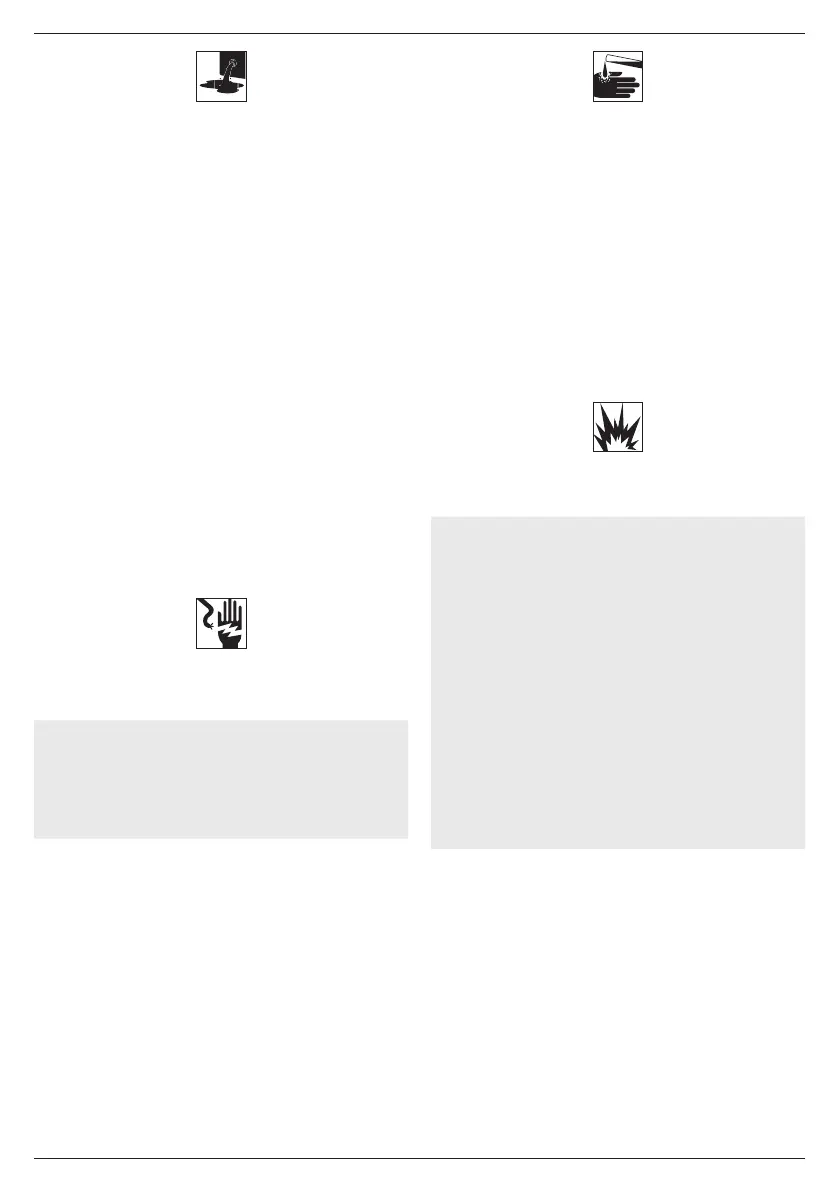6
ENGLISH
DANGER: RISK OF INJURY OR PROPERTY DAMAGE
WHEN TRANSPORTING OR STORING
WHAT CAN HAPPEN HOW TO PREVENT IT
• Fuel or oil can leak or spill
and could result in fire or
breathing hazard. Serious
injury or death can result.
Fuel or oil leaks will
damage carpet, paint or
other surfaces in vehicles
ortrailers.
• Oil could fill the cylinder
and damage the engine
if the unit is not stored
or transported in an
uprightposition.
• If pressure washer is
equipped with a fuel
shut-off valve, turn the
valve to the off position
before transporting to
avoid fuel leaks. If pressure
washer is not equipped
with a fuel shut-off valve,
drain the fuel from tank
before transporting.
Only transport fuel in
an approved container.
Always place pressure
washer on a protective
mat when transporting to
protect against damage
to vehicle from leaks.
Always transport and
store unit in an upright
position.Remove pressure
washer from vehicle
immediately upon arrival
at yourdestination.
DANGER: RISK OF ELECTRICAL SHOCK
WHAT CAN HAPPEN HOW TO PREVENT IT
• Spray directed at electrical
outlets or switches,
or objects connected
to an electrical circuit,
could result in a fatal
electricalshock.
• Unplug any electrically
operated product before
attempting to clean
it. Direct spray away
from electric outlets
andswitches.
DANGER: RISK OF CHEMICAL BURN
WHAT CAN HAPPEN HOW TO PREVENT IT
• Use of acids, toxic or
corrosive chemicals,
poisons, insecticides, or
any kind of flammable
solvent with this product
could result in serious
injury ordeath.
• Do not spray acids, petrol,
kerosene, or any other
flammable materials with
this product. Use only
household detergents,
cleaners and degreasers
recommended for use
with pressurewashers.
• Wear protective clothing
to protect eyes and
skin from contact with
sprayedmaterials.
WARNING: RISK OF BURSTING
WHAT CAN HAPPEN HOW TO PREVENT IT
• Over inflation of
tyres could result in
serious injury and
propertydamage.
• Use a tyre pressure
gauge to check the tyres
pressure before each use
and while inflating tyres;
see the tyre sidewall for
the correct tyre pressure.
NOTE: Air tanks, compressors
and similar equipment used
to inflate tyres can fill small
tyres similar to these very
rapidly. Adjust pressure
regulator on air supply to no
more than the rating of the
tyre pressure. Add air in small
increments and frequently
use the tyre gauge to prevent
overinflation.
• High-velocity fluid spray
directed at pneumatic
tyre sidewalls (such as
found on automobiles,
trailers and the like) could
damage the sidewall
resulting in seriousinjury.
• On pressure washers
rated above 1600psi
(11032kPa) use the
widest fan spray
(40º nozzle) and keep
the spray a minimum
of 200 mm from the
pneumatic tyre sidewall.
Do not aim spray directly
at the joint between the
tyre andrim.

